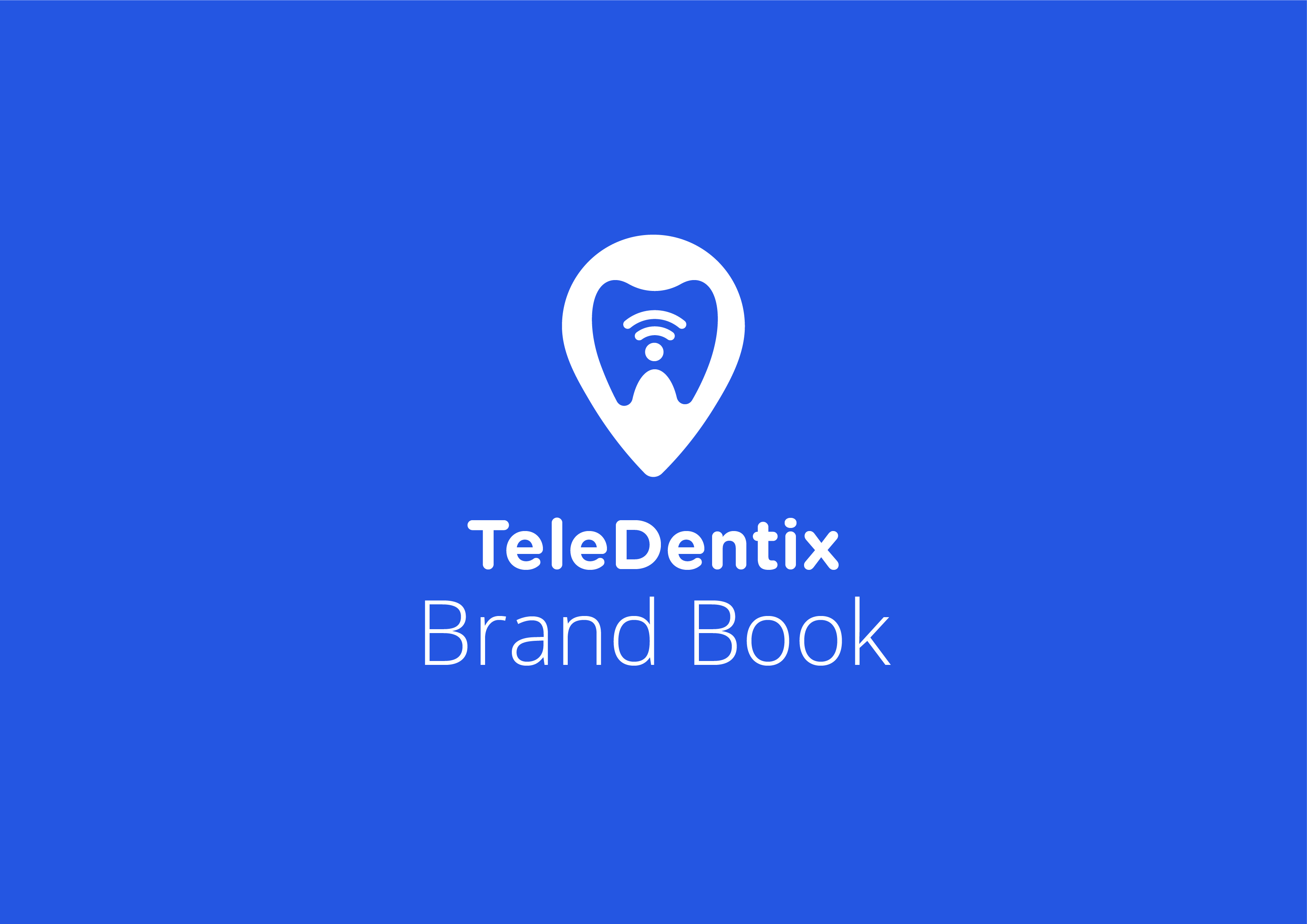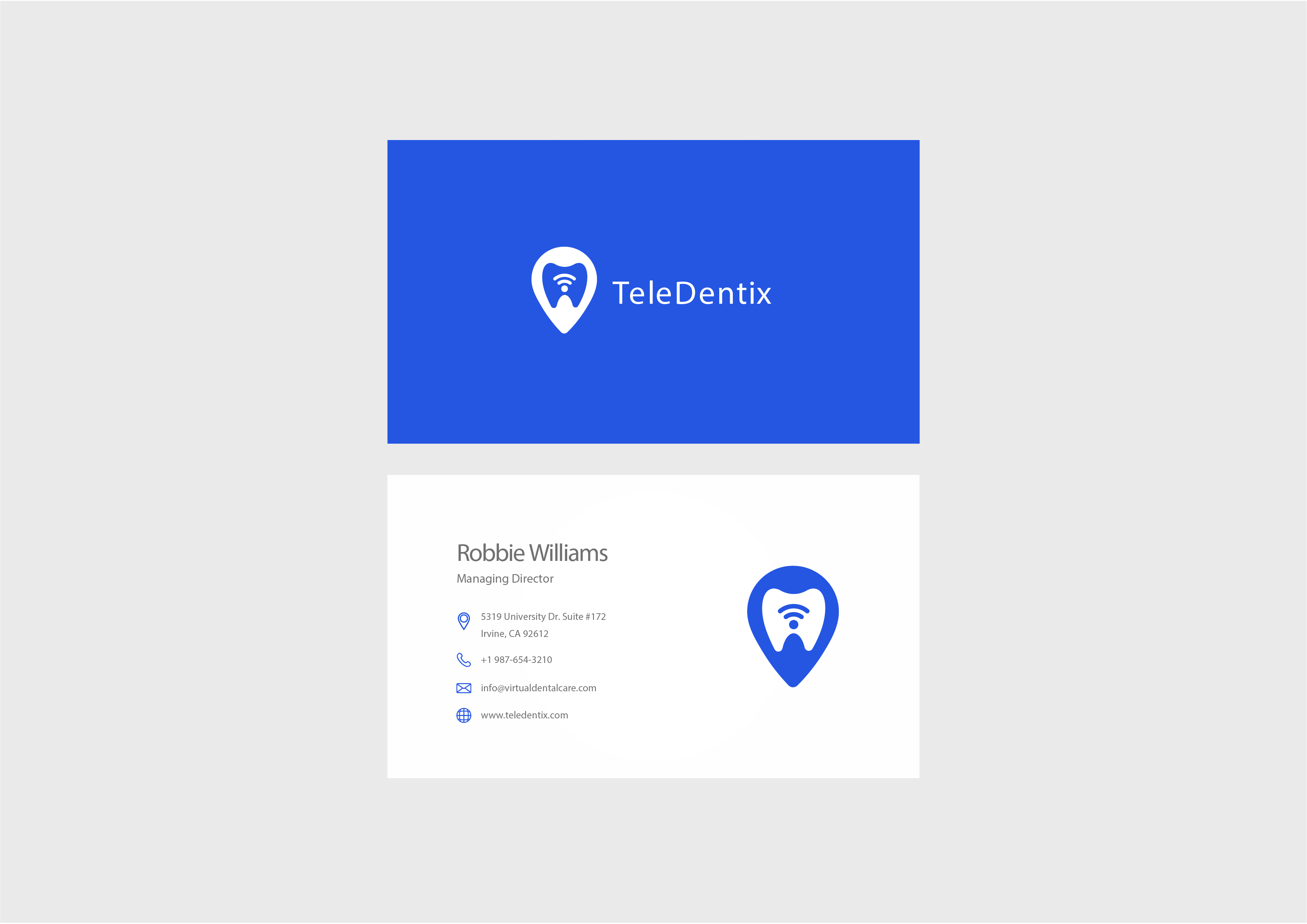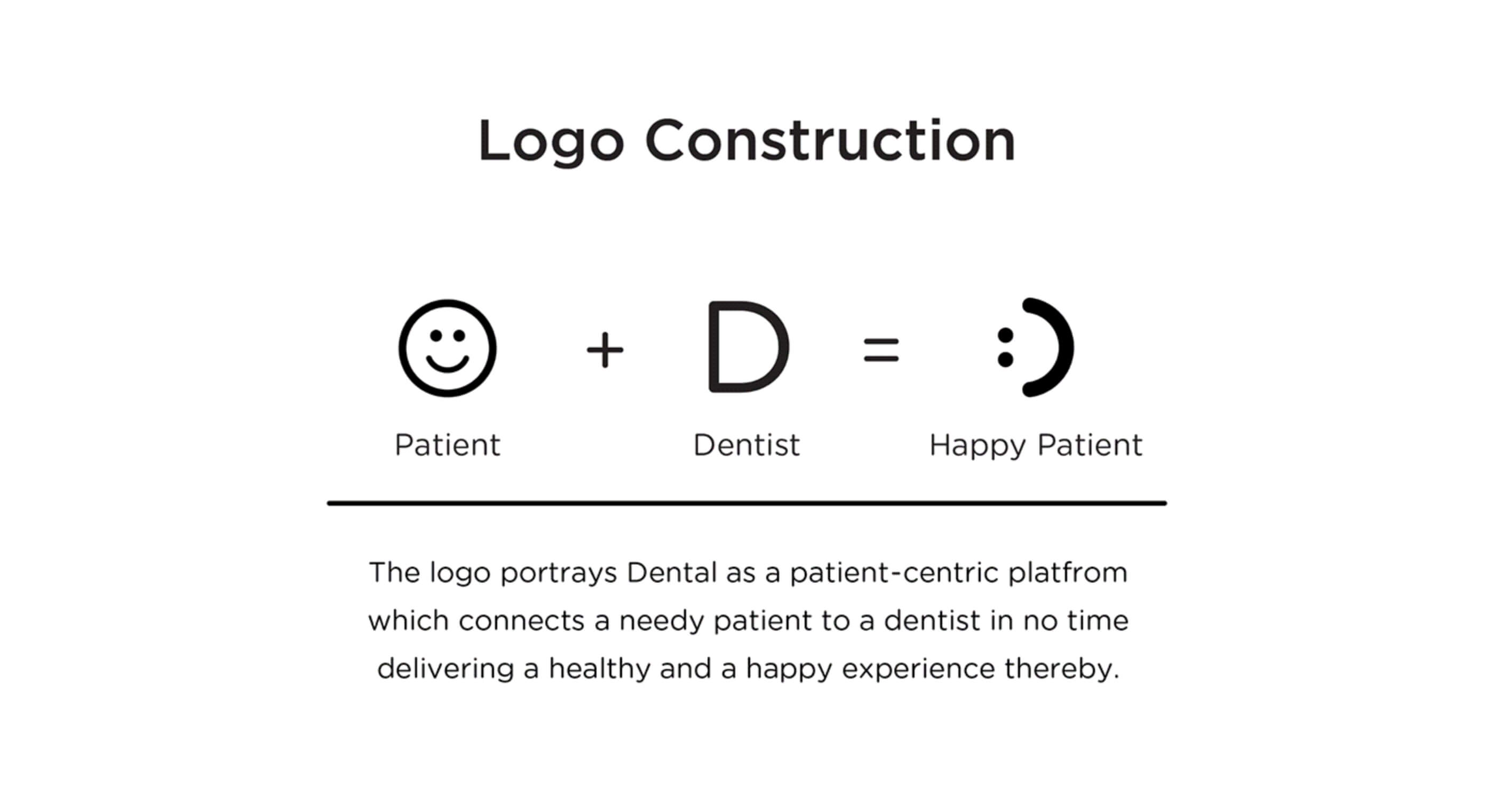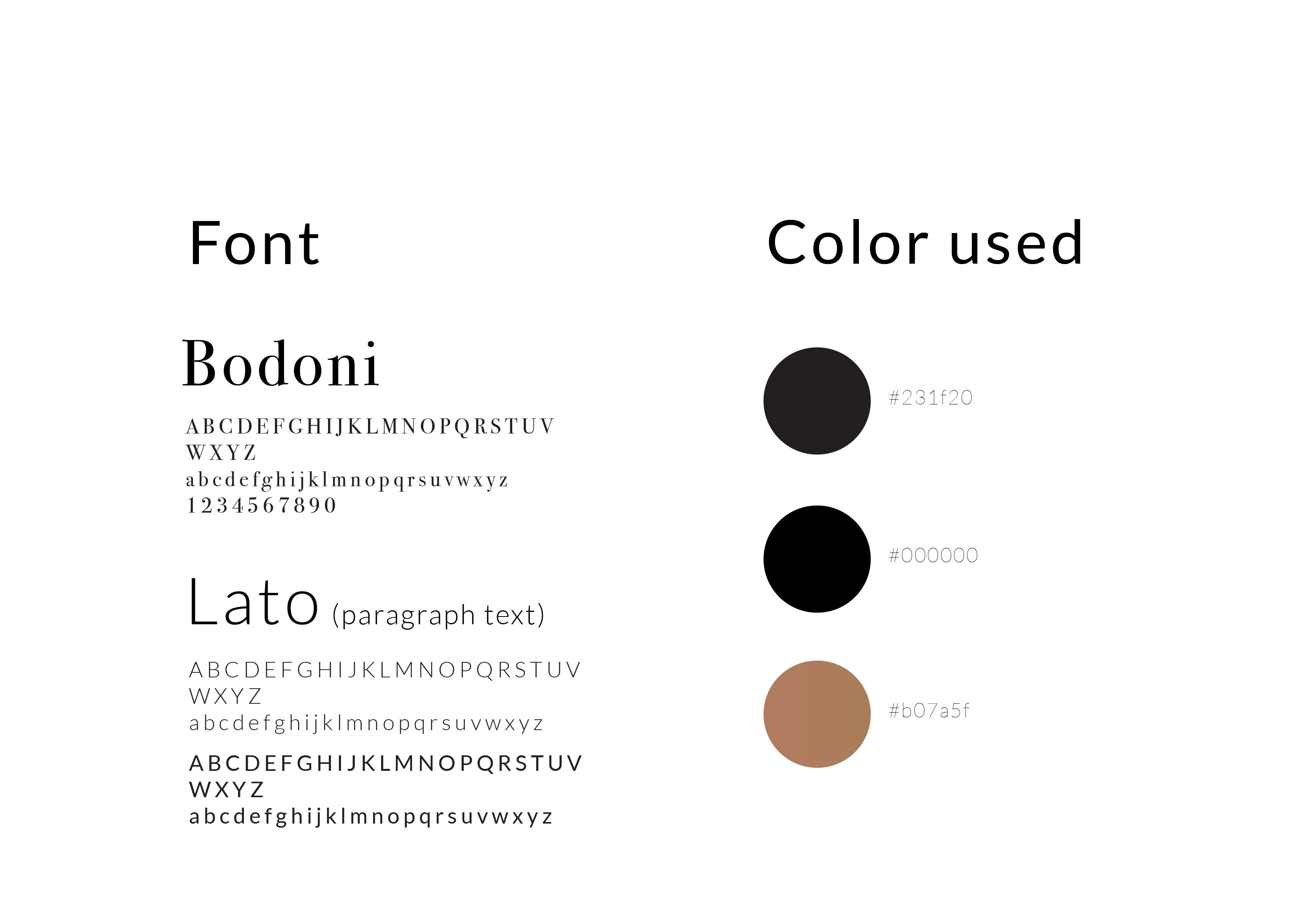
In this Branding Guide, I covered the following topics -
- What is a Branding?
- Branding Guidelines Created by Me
- What is Brand Advocacy?
- What is a Brand Guideline?
- Design System vs Brand Guidelines
- Importance of Brand Guidelines Document
- Personal Branding
- 10 Branding Enemies
- Famous Branding Books
- Branding Glossary
- Hire A Branding Designer
4 min read
Brand guidelines, often referred to as brand guides or style guides, play a vital role in defining the distinct identity and personality of your business.
These guides serve as a reference tool, ensuring that your company's leaders, partners, employees, and associates are familiar with your brand assets and comprehend their appropriate usage.
Enclosed below is valuable information that can aid you in crafting brand guidelines aimed at effectively representing your brand, encapsulating its identity, and upholding its core values.
Hey, Startups! Ready to Add Some 'Wow' to Your Brand?
Let's face it, creating a brand that stands out is serious business… but who says we can't have a blast while doing it?
+ Get it done right the first time
What is a branding?
Branding is a multifaceted concept that encompasses various elements aimed at creating a distinctive identity and perception for a product, service, company, or individual in the minds of consumers or audiences.
 It's not merely about a logo or a tagline; it's a strategic process that shapes how people perceive and feel about a brand.
It's not merely about a logo or a tagline; it's a strategic process that shapes how people perceive and feel about a brand.
Here are key components and aspects of branding:
Brand Identity: This comprises the visual elements that represent the brand, such as the logo, colors, typography, imagery, and design style. Consistency across these elements helps in creating a cohesive and recognizable brand.
Brand Image: This refers to how the brand is perceived by its audience, customers, and the general public. It's shaped by the brand's actions, messaging, quality of products or services, customer service, and overall brand experience.
Brand Positioning: This involves identifying and establishing a unique space in the market that the brand wants to occupy in the minds of consumers. It includes defining the brand's value proposition, target audience, and competitive differentiation.
Brand Communication: This involves the messaging and channels used to convey the brand's story, values, and offerings to the audience. It includes advertising, content marketing, social media, public relations, and other communication strategies.
Brand Experience: This is how customers or users perceive the brand at every touchpoint, from the initial interaction to the purchase and beyond. Positive brand experiences build loyalty and advocacy.
Brand Equity: This represents the value that a brand holds beyond its tangible assets. It's the perceived value and strength of a brand in the market. Strong brand equity often leads to higher customer loyalty, premium pricing, and resilience against market fluctuations.
Brand Extension: This involves leveraging the strength of an established brand to introduce new products or enter new markets. Successful brand extensions capitalize on the existing brand equity to gain acceptance for new offerings.
Brand Evolution: Brands evolve over time due to market changes, consumer preferences, technological advancements, and internal developments. Evolution may include updates to the brand's identity, messaging, or product offerings while maintaining the core essence of the brand.
Brand Management: This refers to the ongoing process of overseeing and maintaining the brand's integrity, consistency, and relevance. It involves strategic decision-making, monitoring brand performance, and adapting to market dynamics.
Brand Guidelines Created By Me
French Cosmetic Brand Guidelines "ILYS"
"ILYS, a France-based cosmetic brand, exudes elegance through its minimalistic yet captivating branding. Inspired by simplicity and sophistication, the design embodies a refined aesthetic that speaks volumes in subtlety. The brand's identity is a harmonious fusion of clean lines, understated typography, and a muted color palette, mirroring the brand's commitment to purity and quality. Every aspect of the branding, from the sleek logo to the minimalist packaging, has been meticulously crafted to evoke a sense of timeless beauty and allure. ILYS stands as a testament to the notion that allure lies not in extravagance, but in the artful balance of simplicity and allure."
Tele-Healthcare Brand Guidelines "Teledentix"
Teledentix, a pioneering telehealthcare dental SaaS product, now boasts an iconic and unforgettable brand identity, meticulously crafted to leave a lasting impression. The branding I designed for Teledentix embodies innovation, reliability, and modernity, all encapsulated within a visually striking yet approachable aesthetic. From the sleek and distinctive logo that resonates with professionalism and technological advancement to the vibrant color palette that infuses a sense of trust and vitality, every element has been thoughtfully curated.
Patient-Centric Telehealtcare - "Dental.com"
Dental.com, a patient-centric SaaS product, now boasts a compelling and unforgettable brand identity, meticulously tailored to leave a lasting impact. The branding I crafted for Dental.com embodies innovation, compassion, and accessibility, reflecting a commitment to revolutionizing dental care. The brand's identity exudes professionalism and trust through a sleek logo that symbolizes precision and expertise. The vibrant yet soothing color palette evokes a sense of comfort and reliability, complementing the user-friendly interface and reinforcing the brand's commitment to patient-centricity.
Makeup Artists Brand Guidelines Marketplace "Olready"
Olready, a unique marketplace catering to makeup artists' brand guidelines, now shines with a distinct and captivating brand identity that speaks volumes in its minimalism. The branding I curated for Olready exudes sophistication, blending minimalism with memorability to create a lasting impression. Through a sleek and timeless logo design that balances simplicity and allure, Olready portrays professionalism and innovation.
TradersMart - A Grocery/Retail Store Brand Guidelines
Traders Mart, a retail haven tailored for Indian consumers, now shines with a vibrant and memorable brand identity. The branding I crafted blends tradition and modernity, reflecting the richness of Indian culture in a distinctive logo and colorful palette. With an inviting and authentic appeal, Traders Mart stands as a cultural touchstone for Indian shoppers.
Globe Telematics - Logistics Brand Guidelines
Globe Telematics, a pioneering name in the logistics industry, now possesses a compelling and memorable brand identity. The branding I crafted for Globe Telematics embodies innovation, reliability, and global connectivity. With a distinctive logo symbolizing seamless movement and precise navigation, the brand's sleek and professional design captures attention. The color palette exudes trust and efficiency, reflecting the brand's commitment to excellence in logistics solutions. Globe Telematics now stands out as a frontrunner, equipped with a brand identity that resonates with its forward-thinking approach in the global logistics landscape.
"Sochic Hair" Wigs eShop Brand Guideline
Sochic Hair, a premier wigs eShop catering to the French market, now boasts an alluring and unforgettable brand identity. The branding I curated for Sochic Hair exudes elegance, sophistication, and style. Through a captivating logo design that epitomizes chicness and grace, the brand radiates confidence. The carefully selected color palette exudes modernity and allure, resonating with the brand's target audience. With a seamless and user-friendly interface, the brand guidelines I crafted ensure an engaging and stylish experience for customers seeking quality wigs. Sochic Hair stands out as a trendsetter in the industry, embodying a brand identity that captivates and inspires.
What is brand advocacy?
Brand advocacy refers to the support, promotion, or endorsement of a particular brand or product by individuals who are enthusiastic, satisfied, and willing to recommend it to others.
Brand advocates are customers, employees, influencers, or stakeholders who have a strong affinity for a brand and willingly advocate for it by sharing positive experiences, recommending products or services, and defending the brand in various conversations or interactions with others.
They play a crucial role in influencing and shaping the perceptions and purchasing decisions of potential customers by authentically endorsing and championing the brand they admire.
Brand advocacy often occurs voluntarily and is driven by genuine satisfaction, trust, and loyalty towards the brand.
 Let's understand brand advocacy with examples:
Let's understand brand advocacy with examples:
Customer Reviews and Testimonials: Imagine a satisfied customer who had a remarkable experience with a skincare brand. They voluntarily write positive reviews, share their experience on social media, and recommend the brand's products to friends and family. Their enthusiastic endorsements serve as authentic testimonials that influence others looking for skincare solutions.
Employee Advocacy: A company with dedicated and engaged employees might have individuals who passionately promote their workplace culture, values, and products. These employees actively share company content on their personal social media profiles, participate in discussions about the brand, and refer potential job candidates or customers, acting as brand ambassadors.
Influencer Marketing: Influencers are individuals with a substantial following on social media who endorse products or services. When an influencer genuinely enjoys and promotes a brand, it can greatly impact their audience's perception and buying decisions. For instance, a fitness influencer advocates for a sports apparel brand by showcasing its quality and performance in their workout routines.
Community Engagement: Some brands foster communities where consumers actively participate, share experiences, and support each other. These brand communities can be forums, online groups, or social media pages where members openly discuss their affinity for the brand, share tips, and recommend products, contributing to a positive brand image.
Brand Loyalty Programs: Brands often reward loyal customers who consistently engage with and advocate for the brand. For instance, a hotel chain offers exclusive perks or discounts to frequent guests who actively share their positive experiences and refer others to stay at their hotels.
These examples demonstrate various forms of brand advocacy, showcasing how enthusiastic customers, employees, influencers, and communities play a pivotal role in endorsing, supporting, and positively influencing a brand's perception and growth.
What is a brand guidelines document?
A Brand Guidelines, also known as a brand style guide or brand book, is a comprehensive document that outlines the visual and verbal elements of a brand. It serves as a reference tool to ensure consistency in how a brand is presented across various mediums. Here are the key elements typically found in a Brand Style Guide:
1. Brand Overview:
- Introduction to the brand's mission, vision, values, and positioning in the market.
- Explanation of the brand's personality, voice, and tone to guide messaging.
2. Logo Usage:
- Detailed guidelines on logo variations, including primary, secondary, and monochrome versions.
- Clear spacing, minimum size, and placement rules for the logo in different contexts.
- Instructions on what not to do with the logo, ensuring its integrity and consistency.
3. Color Palette:
- Presentation of the brand's primary and secondary color palette with specific color codes (CMYK, RGB, HEX).
- Guidelines on color usage, combinations, and where each color should be applied.
4. Typography:
- Specification of primary and secondary fonts for headings, subheadings, and body text.
- Details on font styles, sizes, line spacing, and recommended usage across print and digital platforms.
5. Imagery and Photography:
- Guidelines on the style, mood, and types of images that align with the brand's visual identity.
- Examples of preferred photography styles, filters, compositions, and image treatments.
6. Iconography and Graphics:
- Standards for the use of icons, illustrations, or graphic elements that complement the brand.
- Specifications on icon sizes, styles, and guidelines for their integration into design assets.
7. Voice and Tone:
- Description of the brand's voice (e.g., formal, friendly, authoritative) and tone (e.g., empathetic, playful).
- Examples and guidelines for written communication, including dos and don'ts, to maintain consistent messaging.
8. Layout and Design Principles:
- Grid systems, spacing, and guidelines for layout compositions across different mediums (print, web, social media).
- Design principles, such as the use of whitespace, alignment, and overall aesthetic guidelines.
9. Usage Examples:
- Visual examples demonstrating correct and incorrect implementations of brand elements.
- Mock-ups or templates for common materials like business cards, letterheads, advertisements, etc.
10. Guidelines for Different Media:
- Specific instructions and adaptations for different media channels (website, social media, packaging, advertising).
- Technical specifications for digital assets like social media profile pictures, cover photos, etc.
11. Updates and Maintenance:
- Instructions on how the brand guidelines document will be updated and maintained as the brand evolves.
A comprehensive Brand Style Guide serves as a vital tool for ensuring that everyone involved in representing the brand maintains consistency and integrity across all brand touchpoints, strengthening brand recognition and trust among the audience.
Can a Design System be a part of brand guidelines document?
Yes, a design system can be a part of a brand guideline document, although they serve different but complementary purposes.
A Brand Style Guide primarily focuses on defining the visual and verbal elements that make up a brand's identity. It includes guidelines for logos, colors, typography, imagery, voice, tone, and overall brand presentation. It aims to ensure consistency and alignment in how the brand is communicated across various channels and touchpoints.
On the other hand, a design system is a more extensive and holistic framework that encompasses not only the visual aspects but also the underlying principles, patterns, components, and rules that govern the design and development of digital products or services. It typically includes:
UI Components: Standardized components like buttons, forms, cards, navigation menus, etc., with guidelines on their usage, behavior, and interaction.
Design Patterns: Reusable solutions to common design problems or interactions, ensuring consistency and efficiency in design and development workflows.
Coding Standards: Guidelines and best practices for developers, including code snippets, naming conventions, and documentation for implementation.
Accessibility Guidelines: Standards to ensure that digital products or interfaces are accessible to users with disabilities, covering aspects like contrast ratios, keyboard navigation, screen reader compatibility, etc.
Responsive Design Guidelines: Instructions for ensuring consistent and effective design across various screen sizes and devices.
While a Brand Style Guide focuses on the brand's identity and its application in communication, a design system concentrates on the practical implementation of design principles and elements in digital products or interfaces.

Hire Branding Expert!
Let's inject some humor, quirkiness, and irresistible charm into your brand. Because let's be honest, who doesn't love a brand that makes you chuckle and leaves a lasting impression?
So, if you're ready to give your brand the makeover of a lifetime – one that'll make your competitors green with envy – hit me up! Let's create a brand that's the talk of the town. Psst, it might even get invited to all the cool parties!
Why the brand guidelines document is important for a business owner?
A brand guidelines document is a crucial tool for a business owner for several reasons:
Consistency: It ensures consistency in brand representation across all touchpoints. From logos, colors, and typography, to tone of voice and imagery, brand guidelines establish rules that maintain a unified brand identity. Consistency builds brand recognition and trust among customers.
Clarity and Direction: It provides clear and detailed instructions on how the brand should be presented visually and verbally. This clarity ensures that anyone working on brand-related materials - whether in-house teams, external agencies, or partners - understands and follows the brand's guidelines, maintaining coherence in messaging and design.
Preserving Brand Integrity: Brand guidelines serve as a reference to protect the integrity of the brand. They prevent misinterpretation or misuse of brand elements, ensuring that the brand is presented in a way that aligns with its values, vision, and mission.
Efficiency and Time-Saving: Having a brand guideline streamlines the design and communication process. It reduces the time spent on decision-making by providing pre-defined rules and templates, allowing for quicker and more efficient creation of marketing materials, thereby saving time and resources.
Facilitating Expansion and Collaboration: For businesses expanding into new markets or collaborating with various stakeholders, a brand guideline document serves as a reference to maintain brand consistency across different regions, languages, or collaborations. It ensures that the brand remains recognizable and cohesive.
Onboarding and Training: Brand guidelines play a crucial role in onboarding new employees. They serve as a training resource for newcomers, helping them understand the brand's visual and verbal identity, ensuring that they can contribute to maintaining brand consistency from the outset.
Adaptation and Evolution: As brands evolve and adapt to changing market trends or audience preferences, brand guidelines can be updated accordingly. They serve as a living document that can be revised to reflect the brand's growth while maintaining its core identity.
In essence, a brand guidelines document is a fundamental tool that empowers business owners to safeguard their brand's integrity, ensure consistent representation, streamline processes, and support growth and adaptation in an ever-changing marketplace.
How to create a Personal Branding?
Creating a personal brand involves establishing a strong and authentic identity that represents who you are, what you stand for, and how you want to be perceived. Here's a step-by-step guide to building a personal brand:
Self-Reflection and Definition: Identify your values, strengths, passions, skills, and unique qualities. What sets you apart from others? Define your personal mission statement or purpose.
Define Your Target Audience: Determine who you want to reach or influence. Understand their needs, interests, and challenges to tailor your personal brand messaging effectively.
Craft Your Unique Value Proposition (UVP): Define what makes you different and valuable. What solutions or benefits can you offer? Summarize this into a clear and concise statement.
Consistent Branding Elements: Develop consistent branding elements such as your name, logo (if applicable), colors, typography, and tone of voice. Use these consistently across all platforms.
Online Presence: Build a strong online presence through social media, a personal website, a blog, or a portfolio. Showcase your expertise, share valuable content, and engage with your audience.
Content Creation and Sharing: Create and share content that aligns with your expertise and interests. This could be articles, videos, podcasts, or social media posts that add value to your audience.
Networking and Relationships: Build and nurture relationships within your industry or community. Attend events, engage in conversations, collaborate with others, and seek mentorship or partnerships.
Professional Development: Continuously improve and expand your skills and knowledge. Invest in learning opportunities, certifications, or courses related to your field.
Authenticity and Transparency: Be authentic and genuine in your interactions. Transparency builds trust and credibility with your audience.
Consistent Communication: Ensure that your personal brand messaging and communication are consistent across all channels. Align your actions and words with your personal brand values.
Evaluate and Adapt: Regularly assess your personal brand's performance. Analyze feedback, measure your impact, and adapt strategies based on what works best for your goals.

Remember, building a personal brand is an ongoing process that requires dedication, authenticity, and consistency. Stay true to yourself while showcasing your expertise and unique qualities to create a compelling personal brand that resonates with your audience.
Hire A Personal Branding Designer
Ready to Stand Out? Let's Build Your Unique Personal Brand Together! Elevate your presence, showcase your expertise, and captivate your audience with a personalized branding strategy. Contact me today to kickstart your journey to a standout personal brand!
Feel free to adjust the message according to your specific services, style, or audience preferences.
Which things can hurt your brand?
Several factors can potentially harm a brand's reputation and credibility. Here are some things that can have a negative impact on a brand:
Poor Customer Experience: Negative experiences, such as unsatisfactory service, product defects, or ineffective customer support, can significantly damage a brand's reputation. Dissatisfied customers are more likely to share their negative experiences, impacting the brand's image.
Inconsistent Branding: Inconsistency in brand messaging, design, or communication across different channels can confuse consumers and weaken brand identity. It may lead to a lack of trust and credibility in the brand's promises.
Negative Publicity or Controversies: Scandals, unethical behavior, or controversial actions by the brand, its representatives, or associated individuals can result in public backlash, tarnishing the brand's reputation.
Lack of Transparency: Brands that are not transparent about their practices, ingredients, pricing, or policies may face distrust from consumers. Lack of openness can create suspicion and negatively impact brand perception.
Failing to Adapt: Brands that do not evolve with changing market trends, technology, or consumer preferences risk becoming outdated or irrelevant. Failure to innovate or adapt to new demands can result in losing customers to more agile competitors.
Mismanaged Social Media or Online Presence: Inappropriate or insensitive social media posts, negative interactions with customers online, or mishandling of public relations crises on digital platforms can quickly damage a brand's reputation.
Low-Quality Products or Services: Offering subpar products or services that do not meet customer expectations can lead to negative reviews, decreased customer loyalty, and a damaged brand reputation.
Ignored Customer Feedback: Disregarding or mishandling customer complaints, feedback, or suggestions can create a perception that the brand is indifferent to its customers' needs and concerns.
Unethical Practices: Engaging in unethical business practices, such as false advertising, environmental irresponsibility, or exploitative labor practices, can severely impact a brand's reputation and consumer trust.
Brand Disassociation: Associating a brand with controversial or divisive topics, without a clear alignment with its values or audience sentiments, can alienate customers and damage brand perception.

Addressing and actively mitigating these factors is crucial for brands to maintain a positive image, build trust, and sustain a strong and reputable presence in the market.
Which are the famous books on branding or brand guidelines?
Several books delve into the realms of branding and brand guidelines, offering insights, strategies, and case studies. Here are some famous and highly regarded books on branding and brand guidelines:
"Designing Brand Identity" by Alina Wheeler: This book is a comprehensive guide to creating brand identity programs. It covers various aspects, including research, strategy, implementation, and brand refreshes, offering practical advice and case studies.
"Brand Thinking and Other Noble Pursuits" by Debbie Millman: Renowned brand consultant Debbie Millman interviews influential figures in branding, marketing, and design to explore the philosophy and impact of brands on culture and society.
"Brand Guidelines" by Luc Speisser: This book focuses specifically on brand guidelines, providing practical advice and examples for creating effective guidelines that ensure consistency in brand representation.
"Brand Bible: The Complete Guide to Building, Designing, and Sustaining Brands" by Debbie Millman: In this book, Millman offers a comprehensive guide to brand building, covering topics such as strategy, identity, naming, and brand extension.
"Brand Aid: A Quick Reference Guide to Solving Your Branding Problems and Strengthening Your Market Position" by Brad VanAuken: This book provides practical advice and tools for branding professionals to solve branding challenges and strengthen brand positioning.
"Brand Together: How Co-Creation Generates Innovation and Re-energizes Brands" by Nicholas Ind and Clare Fuller: This book explores the concept of co-creation in branding, emphasizing collaboration between companies and consumers to innovate and strengthen brands.
"The Brand Gap: How to Bridge the Distance Between Business Strategy and Design" by Marty Neumeier: Neumeier discusses the intersection of business strategy and design in creating strong brands, emphasizing the importance of clarity, differentiation, and authenticity.
"Brand Portfolio Strategy: Creating Relevance, Differentiation, Energy, Leverage, and Clarity" by David A. Aaker: Aaker provides insights into managing a portfolio of brands, offering frameworks and strategies to create and maintain a successful brand portfolio.
These books cover a range of perspectives and aspects of branding, from brand strategy and identity to brand guidelines and portfolio management, offering valuable insights and guidance for brand builders and marketers.
Branding Glossary
Brand: A brand is a combination of a name, logo, symbol, design, or any other feature that distinguishes a product, service, or entity from others in the market.
Brand Identity: The visual and verbal elements (logos, colors, typography, imagery, messaging, etc.) that collectively represent a brand and help it stand out in the market.
Brand Equity: The commercial value derived from consumer perception of a brand's name, reputation, awareness, and loyalty. Strong brand equity often leads to customer preference and increased market share.
Brand Awareness: The level of recognition and familiarity that consumers have with a brand. High brand awareness indicates that the brand is easily recognized and remembered by its audience.
Brand Positioning: The process of defining how a brand stands out in the market, identifying its unique value proposition, and creating a distinct space in consumers' minds relative to competitors.
Brand Strategy: A long-term plan outlining the brand's goals, target audience, positioning, messaging, and methods for achieving a competitive advantage.
Brand Messaging: The verbal communication used to convey a brand's story, values, and offerings to its audience. It includes taglines, key messages, and overall tone of communication.
Brand Guidelines: Also known as brand guides or style guides, these are documents that detail how brand elements should be used consistently across various mediums to maintain brand integrity.
Brand Extension: The practice of using an established brand name to launch new products or enter new markets. Successful brand extensions leverage the existing brand equity to gain acceptance for new offerings.
Brand Ambassador: An individual, often a celebrity or influencer, who represents and promotes a brand, lending credibility and visibility to the brand's image.
Brand Loyalty: The degree of attachment and repeat purchase behavior exhibited by customers towards a particular brand, often resulting from positive experiences and emotional connections.
Rebranding: The process of changing or updating a brand's identity, messaging, or positioning to revitalize its image, attract new customers, or adapt to market changes.
Brand Storytelling: The art of using narratives to convey a brand's history, values, and purpose, creating emotional connections and engaging audiences on a deeper level.
Brand Differentiation: The process of highlighting unique features or attributes that set a brand apart from its competitors, emphasizing its distinctiveness in the market.
Brand Promise: A commitment made by a brand to its customers, outlining what they can expect from the brand in terms of quality, experience, and value.
Brand Management: The ongoing process of overseeing and controlling how a brand is perceived in the market, including monitoring brand performance, maintaining consistency, and adapting strategies as needed.
Touchpoints: The various points of interaction between a brand and its audience, including website, social media, advertising, customer service, packaging, and physical locations.
Co-branding: A marketing strategy involving collaboration between two or more brands to create a joint product or service, leveraging each other's strengths and customer bases.
Brand Ecosystem: The interconnected network of products, services, and experiences offered by a brand, designed to provide a holistic and consistent customer journey.
Brand Persona: The human-like characteristics and personality traits attributed to a brand, help to humanize the brand and make it relatable to the target audience.
Brand Image: The overall perception or mental picture that consumers have about a brand, based on their experiences, associations, and interactions with the brand.
Brand Refresh: A strategic update or refinement of a brand's visual identity, messaging, or positioning without a complete overhaul, aimed at keeping the brand relevant and contemporary.
Brand Advocacy: The promotion and support of a brand by satisfied customers or employees who actively recommend and endorse the brand to others.
Emotional Branding: Creating connections with consumers by evoking emotions through brand storytelling, experiences, and messaging, fostering strong emotional bonds with the brand.
Brand Culture: The internal values, beliefs, and behaviors that shape the organizational culture and contribute to the brand's identity and reputation.
Certainly! Here are some unique terms related to branding:
Sonic Branding: The strategic use of sound elements such as music, jingles, or sound effects to create a recognizable brand identity and enhance brand recall.
Brand Rituals: Specific actions, behaviors, or routines associated with a brand that create memorable experiences and reinforce brand loyalty among consumers.
Sub-Branding: The creation of a secondary brand under the umbrella of a primary brand, often targeting specific segments or markets while maintaining a connection to the main brand.
Brand Transparency: The practice of openly sharing information, values, and actions to build trust with consumers, showcasing honesty and authenticity in the brand's operations.
Cultural Branding: Leveraging cultural trends, beliefs, or movements to connect with consumers and position the brand within specific cultural contexts.
Heritage Brand: A brand that emphasizes its long-standing history, tradition, and legacy as a key part of its brand identity and appeal to consumers.
Brand Resonance: The depth and intensity of emotional connection and engagement that consumers have with a brand, leading to strong loyalty and advocacy.
Brand Archetype: A symbolic character or personality that a brand embodies, often based on Carl Jung's psychological archetypes, used to establish a brand's identity and messaging.
Anti-Brand: A deliberate counter-cultural branding strategy that challenges traditional brand conventions and norms, aiming to appeal to consumers seeking authenticity and non-conformity.
Brand Symbiosis: A mutually beneficial relationship between two brands that collaborate or coexist, sharing resources, customers, or market positioning for mutual advantage.
Experiential Branding: Creating immersive and memorable brand experiences for consumers through events, activations, or interactive campaigns that engage multiple senses.
Brand Futurism: A forward-thinking approach that anticipates future trends, technologies, and consumer behaviors to shape a brand's long-term strategies and innovation.
Brand Franchise: A model where a successful brand licenses its name or business model to other entities, allowing it to operate under the brand's identity and guidelines.
Brand Immersion: An in-depth and immersive approach to understanding and integrating a brand's values, culture, and identity throughout an organization.
Brand Collateral: The collection of branded materials, both print and digital, used for marketing and communication purposes, such as brochures, flyers, business cards, and presentations.
Brand Narrative: The storytelling aspect of a brand, encompasses its history, values, and mission in a compelling and engaging manner.
Brand Touchpoint Mapping: The process of identifying and analyzing every point of contact between a brand and its audience, aiming to enhance the overall brand experience.
Brand Essence: The fundamental nature or core identity of a brand is distilled into a few words or phrases that capture its unique value proposition and personality.
Brand Jargon: Specific terminology or language used within a brand or industry, creating a unique identity and fostering a sense of community among insiders.
Brand Ambiguity: A deliberate strategy where a brand leaves room for interpretation or multiple meanings, encouraging engagement and curiosity among consumers.
Brand Dynamism: The ability of a brand to adapt, evolve, and remain relevant in response to changing market trends, consumer preferences, and technological advancements.
Brand Evangelist: A passionate and loyal customer who actively promotes and advocates for a brand, often influencing others through word-of-mouth recommendations.
Brand Coherence: The consistency and alignment between a brand's visual, verbal, and experiential elements, ensuring a cohesive and unified brand image.
Brand Imperative: The key principles or values that drive a brand's actions, decisions, and initiatives, reflecting its core beliefs and guiding its behavior.
Brand Currency: The level of relevance, buzz, or influence a brand holds within its industry or among its target audience at a given time.
Brand Recovery: The strategic process undertaken by a brand to regain consumer trust, reputation, and market position following a crisis or negative event.
Brand Integration: The seamless incorporation and alignment of a brand's identity and messaging across various departments, functions, and business units within an organization.
Conclusion
A brand guidelines document serves as the core of your brand identity, providing clear directives to external parties about your brand's essence and visual representation.
Today, comprehensive design guidelines hold greater significance than ever before. A unified framework enables instant brand recognition among audiences.
In the digital era, with the proliferation of diverse marketing channels, maintaining a consistent brand image across online platforms and physical manifestations is vital for your company's success.
The onus is on you to craft a robust identity and amplify your brand's voice in the market!







































